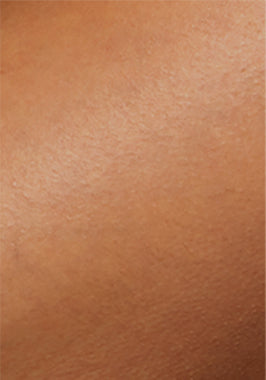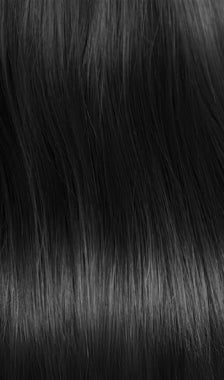Laser and light-based hair removal procedures have grown tremendously in popularity in recent years due to their long-lasting results. One of the most effective technologies is Intense Pulsed Light, commonly known as IPL. IPL hair removal works by using pulses of light to penetrate the skin and damage hair follicles, inhibiting future hair growth. This comprehensive guide explains what IPL hair removal is , how it works, its advantages over other methods, the treatment process, pre- and post-treatment results, and safety considerations. By the end, you'll have a thorough understanding of this transformative hair removal technique.
Table of contents:- How does IPL hair removal work?
- Benefits of IPL Hair Removal
- Risks and side effects of IPL hair removal
- IPL hair removal at home or professionally
- IPL hair removal procedure
- Before and after IPL hair removal
- How often is IPL hair removal necessary?
- How long does IPL hair removal last?
- Does IPL treatment increase the risk of skin cancer?
- Conclusion
How does IPL hair removal work?

At its core, IPL hair removal uses intense pulsed light technology to target the melanin, or pigment, in hair follicles. During the natural hair growth cycle, melanin accumulates in the hair bulb, which is located at the base of the follicle.
When an IPL device produces a flash of broad-spectrum light, the high-intensity light targets the melanin. The pulse is absorbed by the melanin and converted into heat energy. This heat damages the hair follicle and disrupts its growth cycle without affecting the surrounding skin tissue.
Over multiple treatments, the heat energy causes enough damage to the follicle that it can no longer produce new hair. The light targets both pigmented (colored) hairs and fine, light-colored hairs by penetrating the skin and reaching the melanin beneath the surface.
With each session, the technology gets better at seeking out and damaging follicles without harming other tissues. During the treatment itself, you won't feel any pain - just a snap of mild to moderate heat on the skin as the flash occurs.
Benefits of IPL Hair Removal

Some key benefits that make IPL hair removal a popular choice include:
-
Long-lasting results - When used consistently over multiple treatments, IPL can provide hair reduction that lasts for months or even years. The treated hair follicles are damaged to the point that they can no longer grow new hair.
-
Gentle and almost painless - Modern IPL devices and techniques make the treatment quite comfortable. You will feel almost no pain, only temporary warmth on the skin. This distinguishes it from other methods such as waxing or electrolysis, which cause pain.
-
Fast treatment times - Full body treatments often take just 30 minutes to an hour, depending on the area. This is much faster than hours-long waxing or laser sessions.
-
Effective on all skin types - IPL works on light, medium and dark skin tones where it can target the hair follicles beneath the skin's surface. Some laser methods only work on certain hair and skin combinations.
-
Versatile Area Treatment - IPL can be used safely and effectively on the face, legs, underarms, bikini line and other areas with unwanted hair growth, making it a great full-body solution.
-
At-home option available - While professional treatments provide the best results, FDA-approved at-home IPL devices have expanded access and reduced the cost of ongoing touch-ups.
Risks and side effects of IPL hair removal

As with any medical procedure, IPL hair removal carries risks and possible side effects, although they are usually mild when performed properly:
-
Skin irritation/redness: The flash can cause temporary inflammation of the skin in the treated areas. This redness usually subsides within a few hours.
-
Hyperpigmentation: In darker skin tones, long-term pigment changes such as dark spots can occur in some cases. If the treatment is carried out by a professional, this risk is low.
-
Blistering: Very rarely, the heat from the light pulses can cause blistering on the skin. This can be easily controlled with topical treatments.
-
Scarring: However, as with any procedure that alters the skin, there is a theoretical risk of raised or discolored scars.
Always consult a certified dermatologist or licensed esthetician before undergoing an IPL treatment. People with diabetes or who are taking certain medications should also not undergo the treatment. It is also important to protect your eyes from damage from the flashes of light by wearing safety glasses. Overall, however, the risks are very low when the treatment is performed by an experienced person.
IPL hair removal at home or professionally

For optimal results and maximum safety, it is generally recommended that IPL treatments be performed in a medically supervised facility such as a dermatology practice or a medical center. However, thanks to the technological advancement, effective devices for home use have also come onto the market in recent years. Here you can find a comparison:
Home IPL Advantages:
- Lower acquisition costs
- Follow-up treatments can be carried out at home
- Convenient use of the device wherever and whenever you want
- Small areas such as the upper lip or bikini area can be treated as needed
Disadvantages of home IPL treatment:
- Self-treatment required, which involves a steeper learning curve.
- Devices are usually less powerful than professional versions.
- To achieve results similar to in-office treatment, multiple sessions may be necessary.
- Safety features not as robust as those found in medical devices.
Advantages of professional IPL treatment:

- Treatments are performed by a licensed professional to ensure maximum safety.
- More powerful devices enable faster and more comprehensive treatment per session.
- Individual settings optimize the results for each patient's skin or hair.
- Professional advice and expertise from a medical provider.
Compared to home treatments, fewer sessions are required overall.
For most people, it is ideal to start with a few professionally administered treatments to significantly reduce hair growth. After that, results can be maintained with occasional home treatments. Over-the-counter devices can complement, but not replace, the effectiveness of clinical IPL hair removal.
IPL hair removal procedure
When undergoing IPL treatment in the practice, you can usually expect the following steps:
- A skin test is carried out on a small area 2 to 3 weeks in advance to rule out allergic reactions.
- The treatment area is cleaned and any creams or oils are removed to avoid burns.
- A cooling gel may be applied to soothe the skin and protect it from heat.
- Safety goggles are worn to protect your eyes.
- The technician selects the appropriate wavelength, intensity and pulse duration.
- The handheld IPL device is gently guided over the skin and flashes with each pass.
- Multiple overlapping passes ensure complete coverage of the target area.
- Immediately afterwards, a cooling fan or gel soothes the heated skin.
- For optimal results, 6-8 30-minute sessions spaced 4-6 weeks apart are usually recommended.
- If necessary, further fine-tuning treatments for specific areas can follow.
During the virtually painless procedure, you will feel light, harmless pulses on your skin as the device flashes. Most people only feel a slight heat that subsides within an hour, with no side effects. Gentle treatments minimize risks while achieving excellent, long-term hair removal results.
Before and after IPL hair removal

Most clients notice significant hair thinning after just a few treatments. The results improve over the months as the follicles are gradually damaged over several treatments. Here is a typical process:
First session:
- Immediately afterwards, the treated hair falls out within a few weeks.
- They grow back, but the new hair is sparser, finer and lighter.
Second session:
- Existing hair grows back finer and less dense than before.
- Some areas may already be hair-free and only minor touch-ups are needed.
Third session:
- New hair becomes smaller, darker and denser after each treatment.
- Significantly less hair grows back between treatments.
Six sessions:
- Most of the problem hair has disappeared, especially on the legs, armpits and bikini area.
- Regular follow-up treatments provide long-term results for 1-3 years.
The process takes several months, but the smooth, long-lasting results are worth the effort. It is not uncommon for hair to disappear almost completely or be reduced by 95%. Patience and consistency will produce excellent results.
How often is IPL hair removal necessary?
The frequency of IPL hair removal treatments required depends largely on your individual skin and hair characteristics. In general:
-
Dark, coarse hair: These clients see the fastest changes and require fewer treatments (6-8 sessions spaced 4-6 weeks apart).
-
Light, fine hair: Thinner, lighter hair is more stubborn. These people require 10 or more treatments for optimal reduction.
-
Hair growth rate: Individuals whose hair typically grows back quickly will need a touch-up every 4-6 months. Slow-growing hair may need up to 6 months or more between touch-ups.
-
Treatment area: Larger areas of the body such as the back/chest require more sessions than smaller areas on the face.
-
Skin/hair pigmentation: Darker skin/hair shows results faster than lighter skin/hair.
Treatment should always begin in a professionally approved facility. After initial success, maintenance of treatment may include annual cleanings or occasional home touch-ups to prevent seasonal growth spurts and maintain long-term hair-free skin. Consistency is key to the best results.
How long does IPL hair removal last?

One of the main benefits of IPL hair removal is the long-term, virtually permanent effect with consistent use. Here is a guide to the expected longevity of hair removal:
-
6 months to 1 year: For most people, results will last at least 6 months to a year after a full series of 6-8 treatments spaced 4-6 weeks apart. During this time, hair will grow back much finer and sparser.
-
1-3 years: With annual top-up treatments, many clients remain hair-free or with minimal regrowth for 1-3 years after the initial treatment. For some, results last even longer.
-
Long-term reduction: With consistent annual touch-up treatments, hair remains under control even after 5+ years. Although long-term removal cannot be guaranteed, most report a long-term 80-90% reduction over several years.
-
Factors affecting longevity: Hair thickness/amount, skin color, hormone levels, and adherence to aftercare treatments all affect how long hair stays away. Genetics also play a role in how quickly follicles recover.
-
Follow-up treatments work: Even if hair grows back over time, subsequent IPL treatments can continue to shrink and lighten hair to restore smooth skin.
With careful, long-term care, IPL hair removal can provide a lifetime of reduced hair without the need for repeated waxing, shaving, plucking, or depilatory creams. While the results are not necessarily permanent, they outperform alternative methods and provide balanced, natural-looking hair reduction for years with regular use.
Does IPL treatment increase the risk of skin cancer?
As with prolonged sun exposure, there is some research to suggest that skin cancer may be a concern with IPL hair removal due to the energy deposited in the treated areas. However, several factors reduce the risk profile of IPL compared to other higher light sources:
-
The wavelength used targets melanin, not DNA: IPL flashes selectively heat the melanin pigment without directly damaging the DNA, as UV radiation does.
-
Short pulses minimize heat transfer: Short microsecond flashes avoid sustained heat accumulation in the tissue compared to continuous light.
-
Professional monitoring protective measures: Trained technicians carefully monitor patients and interrupt treatment if protective reactions such as redness occur.
-
Compliance with safety protocols: Use of cooling gels, eye protection and limiting cumulative light exposure per session prevent the risk of thermal injury.
-
Home devices undergo rigorous testing: Consumer models undergo extensive testing and modeling to verify energy performance below the threshold for safe self-use.
Long-term effects are still being studied, but research is increasingly differentiating IPL from other UV and visible sources, particularly in relation to the issue of IPL hair removal skin cancer . To further minimize the theoretical risk, sun exposure near treatments, use of sunscreen, and limiting the frequency of application can provide additional comfort when done prudently and under medical guidance. For most people, the hair and self-esteem benefits of responsible professional or home use far outweigh the theoretically very small risks.
Conclusion
As one of the leading methods for long-term hair removal, IPL technology delivers smooth, hair-free results by targeting hair follicles. With multiple treatments spaced several weeks apart, patients can remove a large amount of unwanted hair over a longer period of time without disrupting the natural hair growth cycle.
While the method is not suitable for every individual situation, IPL hair removal offers unparalleled convenience, personalized treatment, and a more long-term solution than shaving, plucking, or waxing. As technology continues to improve these medical devices, IPL hair removal will continue to revolutionize personal care for countless people seeking balanced hair reduction. With the right selection and a reputable doctor, it promises seamless perfection for years to come, with almost no pain or scarring. IPL hair removal represents an exciting new standard for elegant, long-lasting hair removal when done thoughtfully and under medical guidance.





























